
INSIGHTS INTO MARITIME COMPLEX SYSTEMS PART 1: CONCEPTS AND DEFINITIONS
TABLE OF CONTENTS EXECUTIVE SUMMARY . . . . . . . . . . . . . . . . . . . . . . . . . . . . . . . . . . . . . . . . . . . . . . . . . . . . . . . . . . . . . . . . 1 INTRODUCTION . . . . . . . . . . . . . . . . . . . . . . . . . . . . . . . . . . . . . . . . . . . . . . . . . . . . . . . . . . . . . . . . . . . . . . 2 Definitions 2 Background — Industrial Revolution 3 Technologies Driving Industry 4 0 3 Shipping 4 0 4 COMPLEX SYSTEMS IN MARITIME INDUSTRY . . . . . . . . . . . . . . . . . . . . . . . . . . . . . . . . . . . . . . . . . . . . . 5 What is a System? 5 Complexity 6 Complex System and Emergent Property 7 Simple vs Complicated vs Complex Maritime System 8 Dynamic Positioning System — An Example of Existing Complex Maritime Systems 10 MASS — An Example of Future Complex Maritime Systems 11 CONCLUSION . . . . . . . . . . . . . . . . . . . . . . . . . . . . . . . . . . . . . . . . . . . . . . . . . . . . . . . . . . . . . . . . . . . . . . . 14 LIST OF ACRONYMS . . . . . . . . . . . . . . . . . . . . . . . . . . . . . . . . . . . . . . . . . . . . . . . . . . . . . . . . . . . . . . . . . . 15 REFERENCES . . . . . . . . . . . . . . . . . . . . . . . . . . . . . . . . . . . . . . . . . . . . . . . . . . . . . . . . . . . . . . . . . . . . . . . 16
EXECUTIVE SUMMARY
As industry continues to mature and bring technological advances, the term Industry 4.0 or the fourth industrial revolution has been introduced. Likewise, the maritime sector is embarking on its own transformation in the form of Shipping 4.0, driving rapid digitalization and embracing novel technologies. The digital transformation enabled by advancement in sensor technologies, Internet of Things (IoT), intelligent systems and big data analytics has invoked changes in maritime ecosystems, introducing new capabilities especially in hybrid ships, smart ships, smart ports, autonomous ships and remote pilotage. These new capabilities require computer-based systems supported by complex software algorithms, as well as highly integrated operations, a high level of interoperability with the involvement of multiple stakeholders and constituent systems.
The COVID-19 pandemic accelerated the pace of adoption of digital solutions, which can be seen by the increase in remote services such as remote operational support in the form of health and performance supervision, remote inspection and survey, and remote supervision and pilotage. In the area of Marine Autonomous Surface Ship (MASS), IMO has recently completed the Regulatory Scoping exercise and moving towards a possible MASS code by the year 2028. In the area of reducing greenhouse gas (GHG) emissions, IMO initial GHG strategy targets to reduce total annual GHG emissions by at least 50 percent by 2050 compared to 2008.
All the above point to the inevitability of increased complexity in the ship systems. This may cover propulsion and energy management systems (EMS), maneuvering, stationkeeping and dynamic positioning (DP) systems, and overall system control philosophy from remote supervision and control up to and including autonomous systems. It may also cover the interconnection of various constituent components enabling such capability, such as remotecontrolled navigation.
It is crucial to be able to identify complex systems and help promote the safe implementation of these systems. ABS recognizes the importance of addressing complex maritime systems and is at the forefront of qualifying new technologies and establishing requirements for complex maritime systems through its Rules and Guides.
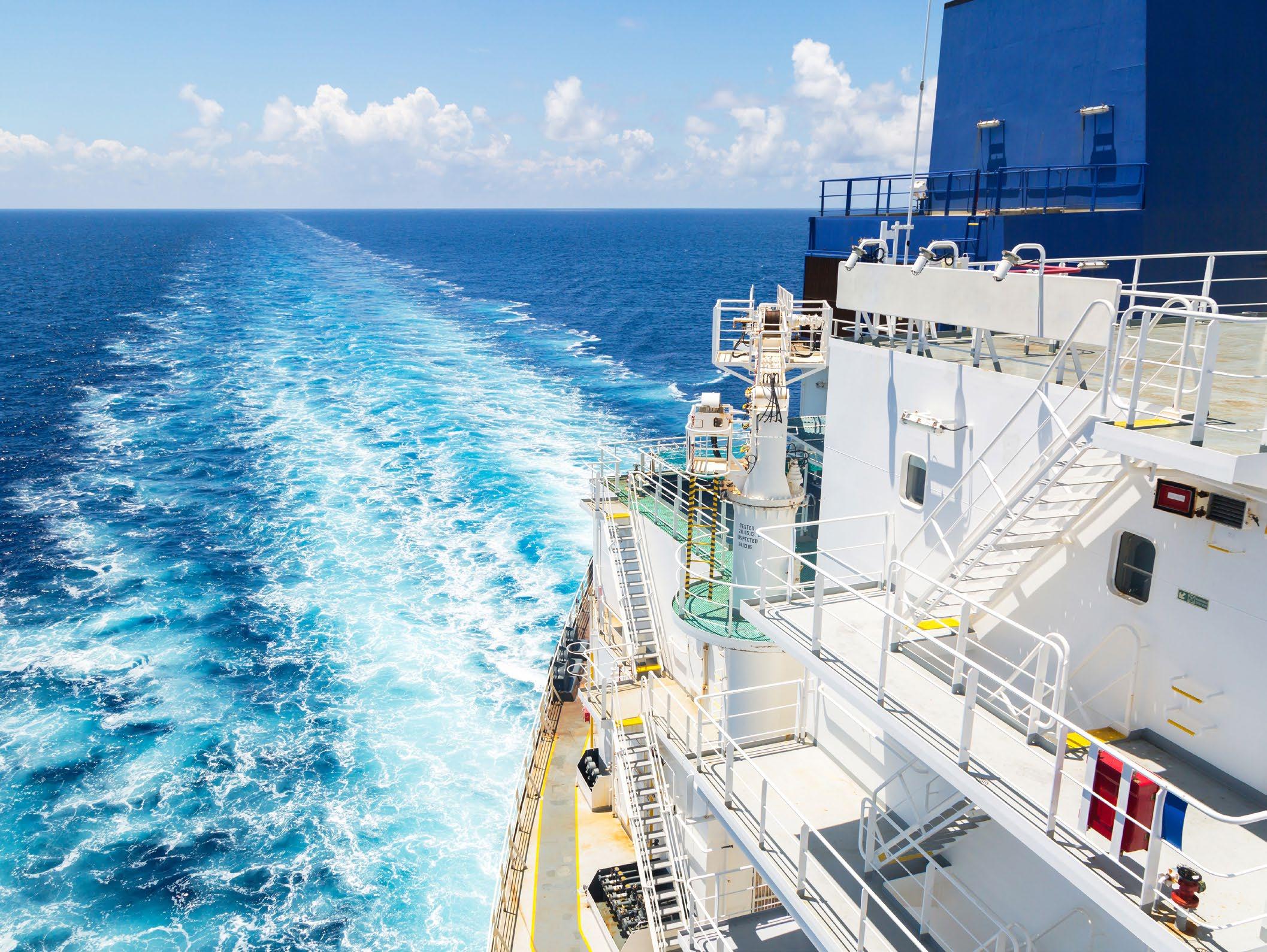
Page 1 INSIGHTS INTO MARITIME COMPLEX SYSTEMS
INTRODUCTION
Part 1 of this paper will look at complex systems in the maritime context, starting with the impact of Industry 4.0 on the maritime industry which is driving the digital transformation of existing and new maritime systems. Following that, a review of the basic concepts of systems and complexity, leading to the definition of complex systems. The paper will use MASS as an example to illustrate how future systems require us to recognize and address complex systems and their relation to safety at sea.
DEFINITIONS
Table 1: Table of key definitions
Term Description
Complexity
Degree to which a system’s design or code is difficult to understand because of numerous components or relationship among components
Complex Systems
Constituent System
Emergence
Heterogeneity
Socio-Technical System
Reconfigurable and highly automated integrated systems in which safety of operation is frequently dependent on computer-based systems, their software components, and their interactions with operators and other engineering systems
An independent task-oriented system integrated into a larger system-of-systems
The principle that entities exhibit properties which are meaningful only when attributed to the whole, not its parts
The quality or state of consisting of dissimilar or diverse elements
A system that consists of interactions between human and machine within the environmental context
System
System Boundary
System Context
Combination of interacting elements organized to achieve one or more stated purposes
A distinction made by an observer which marks the difference between an entity that observer takes to be a system and its environment
Describes the system relationships and environment, resolved around a selected system-of-interest
System Element Member of a set of elements that constitutes a system
Systems Engineering
System of Interest
System-of-systems
A methodical, multi-disciplinary approach for the design, realization, technical management, operations and retirement of a system
The system whose life cycle is under consideration
The large-scale integration of many independent task-oriented systems to create a larger, more complex system which offers more functionality and performance than simply the sum of the constituent systems
INSIGHTS INTO MARITIME COMPLEX SYSTEMS Page 2
INDUSTRY
Figure 1: Industry 1.0 to Industry 4.0
Figure 1 shows the timeline of the Industrial Revolution from the first in 1784 to the fourth revolution in 2011. Industry is currently in its fourth revolution, focusing on achieving improved and smart manufacturing though the use of digital technologies such as IoT, big data, cloud computing, robotics and artificial intelligence (AI). The purpose of each revolution remains unchanged, to improve productivity and efficiency through technological advancement. With each iteration of the industrial revolution, the complexity of the implemented systems increased, and with each change in how work was done, how people interact with one another and with the entire industrial ecosystem was also altered, increasing complexity. Industry 4.0 is no different, but by leveraging the cyber aspect of the system, an unseen element of complexity is introduced, perhaps more so than the previous three industrial revolutions combined.
TECHNOLOGIES DRIVING INDUSTRY 4.0
Apart from the core listed in Figure 1, there are other technologies supporting Industry 4.0. Figure 2 lists a total of nine trending technologies that makes up the foundation for Industry 4.0.
Additive Manufacturing (AM) — generally referred to as 3D printing, which enables rapid production of highly customized parts or products from digital 3D models. Products can be 3D printed using a variety of processes and materials (e.g., plastics, metals, composite materials).
Augmented Reality (AR) — the technology that overlays digital information on top of the physical environment using equipment such as AR glasses, headsets or through a real time display (e.g., on a phone, tablet, monitor), to enhance the user experience and interaction with the physical environment. It can be used by the industry to provide real-time information to aid users in decision-making or providing guidance on
and procedures.
BACKGROUND — INDUSTRIAL REVOLUTION
repairs
1.0 • Mechanical Production • Water and Steam Power INDUSTRY 2.0 • Division of Labor • Mass Production • Electrical Energy INDUSTRY 3.0 • Electronics • IT Systems • Automated Production INDUSTRY 4.0 • Internet of Things (IoT) • Robots and Artificial Intelligence (AI) • Big Data • Cloud Computing 1784 1870 1969 2011 Year Complexity Cyber-Physical Systems INDUSTRY 4.0 Autonomous Robots Augmented Reality Big Data and Analytics Cybersecurity Additive Manufacturing Industrial Internet of Things System Intergration SimulationCloud Computing Figure 2: Nine technologies supporting Industry 4 PART 1: CONCEPTS AND DEFINITIONS Page 3
Autonomous Robots — robots were already introduced during the third industrial revolution to handle routine processes. However, with advancement in sensors, usage of Industrial IoT, big data analytics and AI, autonomous robots are made possible to enhance the speed and accuracy of operation with an expanded range of capabilities such as collaborative work with other robots, working alongside humans and performing high level tasks.
Big Data and Analytics — huge amounts of data collected from industrial IoT devices and industrial systems are classified and analyzed to deduce useful information for improving efficiency, performance and providing predictive analysis.
Cloud Computing — enables storing and sharing of data between sites across different geographical locations. As the technology gets better, companies can leverage the computing powers on the cloud to enable data driven services without the need to spend time setting up and maintaining physical servers.
Cybersecurity — digital transformation and increasing connectivity within the industrial sector opened more areas for potential cyberattacks thus deterring the adoption of Industry 4.0 technologies. Cybersecurity technologies and strategies becomes increasingly crucial in the Industry 4.0 era.
Industrial Internet of Things — a subset of IoT, particularly meant for industrial applications to collect real-time mission or business-critical data.
Simulation — leverages a large amount of real-time data and modeling to optimize decision making, design and operation of complex industrial systems.
System Integration — consists of horizontal integration which creates an interconnected network within the production floor, between multiple production sites and across the whole supply chain, and vertical integration that links up the organizational functions such as production, operations, R&D, finance, sales and marketing, etc.
SHIPPING 4.0
Each industrial revolution has impacted the shipping industry: the introduction of steam engines to replace sail power in the first revolution, the transition from steamships to motorships using internal combustion engines in the second revolution, and the introduction of automation and computerized systems in the third.

The various technological advancements in the current Industry 4.0 are driving a transformation in the shipping industry also known as Shipping 4.0. Those trending technologies include IoT, big data analytics and autonomous systems, together with supporting technologies described in the previous section such as the use of simulation and the need for cybersecurity to protect these systems from tampering.
Shipping 4.0 is driving the maritime ecosystem toward smart vessels and ports, as well as autonomous vessels forming an interconnected smart maritime ecosystem. Despite COVID-19 disrupting maritime industries such as coastal tourism and port activities, the outlook for post COVID-19 is positive, especially in the areas of aquaculture, fisheries and clean energy.
The complexity of the maritime ecosystem will further increase as ports and vessels are more interconnected using smart and autonomous systems together with the increase in complexity with new infrastructures required to support cleaner energy sources and processes.
INSIGHTS INTO MARITIME COMPLEX SYSTEMS Page 4
COMPLEX SYSTEMS IN MARITIME INDUSTRY
There is no single simple and elegant definition of complex systems because different fields of study will have their own perspective in defining complex systems. In biology, the human body is a complex system and in economics, the financial market itself is a complex system. In the context of maritime, the entire shipping ecosystem is a complex system. To have more context, the following sections will serve as a baseline for the definitions of key concepts and characteristics of complex systems with examples to illustrate them. The paper will then build on these definitions by introducing technical approaches to manage complexity.
WHAT IS A SYSTEM?
According to the International Organization for Standardization (ISO), International Electrotechnical Commission (IEC) and Institute of Electrical and Electronics Engineers (IEEE), a system is defined as “combination of interacting elements organized to achieve one or more stated purposes”.
Elements refer to the individual components that make up the system. They can be hardware, software, data, humans, processes, procedures, facilities, materials and naturally occurring entities (e.g., ocean, waterway) or any combination. These elements can also be individual systems, thus making up a system-of-systems (SoS).
To better relate the scope of a particular system of interest, a system context is required to establish the interconnections between system elements within the system boundary and the interfaces to external elements outside the boundary but within the physical operating environment. Figure 3 shows a simplified diagram of system context. The instance of such context aids the user of the system to not just focus on the system of interest but also the external interfaces and effects at the macro level. The determination of the system boundary is essentially the choice of the user to aid in setting the scope of the system of interest.
Operating Environment
System of Interest
Figure 3: Simplified representation of system context
For maritime context, the system of interest is usually a technical or socio-technical system. A socio-technical system is a system that consist of interactions between human and machine within the environmental context. Figure 4 shows an example of a ship’s SoS consisting of subsystems such as the communication systems (e.g., VHF Radios and Satellite Communication), radar system (e.g., X-band and S-band radar) and firefighting systems (e.g., CO 2 fire-extinguishing system and water sprinkler system).
External Interface
Interconnection
System Element
System Boundary
External Element
PART 1: CONCEPTS AND DEFINITIONS Page 5
Operating Environment: Waterway
Figure 4: Simplified system context for typical shipping vessel
COMPLEXITY
The concept of complexity is difficult to define, and it is viewed differently depending on the field of study. This section will present the concept of complexity that best applies to the context of maritime man-made technical or socio-technical systems.
The System Engineering Body of Knowledge (SEBoK) defines complexity as “a measure of how difficult it is to understand how a system will behave or to predict the consequences of changing it. It occurs when there is no simple relationship between what an individual element does and what the system as a whole will do, and when the system includes some element of adaptation or problem solving to achieve its goals in different situations”.
Sheard and Mostashari categorized complexity into three types as follows:
STRUCTURAL COMPLEXITY
• Size — referring to the number of elements within the system. A system with a large number of elements will likely be complex, however, if size is the only factor, then the system should just be complicated and not complex. For large vessels, the number of elements will naturally be large, but it will need to also have other complexity types to be considered a complex system.
• Connectivity — referring to the number of interfaces between the elements within the system. The number of interfaces needs to be large for a system to be considered complex. For large vessels, there are many interconnected constituent systems and components within these systems for the whole vessel to fulfil its purpose as shown in Figure 4.
• Heterogeneity — referring to the diversity in the type of interfaces between the elements. The more diverse in the type of interfaces, the more complex the system can get. For large vessels, there are diversity in the interfaces of its elements including mechanical, electrical, digital, pneumatic and hydraulic interfaces.
DYNAMIC COMPLEXITY
• Short term — referring to how the system can change within a short period of time to react to changes in the environment. This system response can be achieved with the human element or with software. For an autonomous ship with collision detection and collision avoidance capability, the system can react dynamically when there is a collision course. For a ship utilizing hybrid energy, the energy management system (EMS) can adjust performance based on the environmental and system loads to optimize energy consumption.
Shipping
Vessel
SIMPLIFIED SYSTEM CONTEXT OF A TYPICAL SHIPPING VESSEL
Other Vessels
Port Terminal
Navigation Sensors
Propulsion System
Radar System
Fire Fighting System
Communication System
Ship Company
Ship Structure
Autopilot System
Steering System
Bilge System Electrical System
INSIGHTS INTO MARITIME COMPLEX SYSTEMS Page 6
• Long term — referring to how the system can evolve over a long period of time. The system can adapt and respond to its environment and is usually achieved with human element in the system. For future maritime systems making use of AI, it will be possible for the system to adapt and evolve over a period of time to have a different system behavior.
SOCIO-POLITICAL COMPLEXITY
Refers to the number of stakeholders at a macro level. The system is greatly influenced by socio-political factors. The maritime ecosystem for example, is heavily influenced by the global pandemic, oil prices and regional conflicts.
Referring to Sheard and Mostashari’s dynamic complexity, it relates to SEBoK’s definition of complexity where there is the element of adaptation or problem solving to achieve the system’s goals in different situations. This characteristic will be important in identifying a complex system and it will be further explored in the following sections.
COMPLEX SYSTEM AND EMERGENT PROPERTY
Having defined the various types of complexity in the previous section, this section will define what is considered a complex system and differentiate it from a complicated system.
According to the Complex Systems Society (CSS), complex systems are defined as “systems where the collective behavior of their parts entails emergence of properties that can hardly, if not at all, be inferred from properties of the parts”.
According to Checkland, emergence is “the principle that entities exhibit properties which are meaningful only when attributed to the whole, not its parts”. With this definition, any system can exhibit emergence and not just complex systems. Hence, to clarify the emergent property which is widely accepted as a characteristic of a complex system, the concept of emergence should be further categorized into three types: simple, weak and strong emergence.
• Simple Emergence — it emerges from the combined attributes of the system elements and is present in noncomplex systems. For example, the simple emergent property can be derived from its system elements using simple physics or mathematical equations.
• Weak Emergence — it is the expected property that the system elements are combined to achieve. As it is the result of a complex system, the level of emergence cannot be defined just from the properties of the individual system elements. Referring to SEBoK’s definition of complexity, it means that there is no simple relationship between what an individual element does and what the system as a whole will do.
• Strong Emergence — it is the unknown emergence that will occur only when certain conditions are met. It can be revealed though extensive simulation or testing, or in unexpected encounters during operation when specific conditions are met. Relating to Sheard and Mostashari’s three types of complexity, strong emergence can be a result of dynamic complexities where the system reacts to changing conditions. In this case, the conditions that trigger the system reaction (strong emergent property) is not yet known.
Therefore, where an emergent property of a complex system is concerned, it usually refers to weak and strong emergence.
ABS defines complex systems as reconfigurable and highly automated integrated systems in which safety of operation is frequently dependent on computer-based systems, their software components, and their interactions with operators and other engineering systems.
Relating back to Sheard and Mostashari’s three types of complexity, ABS’ definition of complex systems considers dynamic complexity which is achieved either with the human element (the operators) or with software components contained within computer-based systems.
Combining the definitions for complexity and complex systems, a rule of thumb for categorizing a technical system as complex will be for the system to be computer-based and exhibiting dynamic complexity (i.e., system can change its behavior when condition changes), and for a complicated system despite having medium to high structural complexity to always have a deterministic behavior (i.e., system does not behave differently when condition changes).
PART 1: CONCEPTS AND DEFINITIONS Page 7
Table 2: Guide to categorizing system complexity. System Complexity Structural Dynamic SocioPolitical Emergence Size Connectivity Heterogeneity Short Term Long Term Simple Weak Strong Simple Low Low Low Nil Nil Nil Yes No No Complicated Mid-High Mid-High Low-High Nil Nil Nil Yes No No Complex Mid-High Mid-High Low-High Yes Maybe Maybe Yes Yes Maybe Table 2 provides a summarized guide to categorizing the complexity of a system. The following section will explore more into specific example systems. SIMPLE VS COMPLICATED VS COMPLEX MARITIME SYSTEM Table 3: Comparison of different systems and their complexity type System Description Structural Dynamic SocioPolitical Emergence System ComplexitySize Connectivity Heterogeneity Short Term Long Term Simple Weak Strong Oars Very Low Very Low Very Low Nil Nil Nil Yes No No Simple Outboard Motor Med Med Low Nil Nil Nil Yes No No Complicated Modern Ship Steering & Propulsion System High High High Nil Nil Nil Yes No No Complicated Dynamic Positioning System High High High Yes Nil Nil Yes Yes Maybe Complex Autonomous Navigation System (Small vessel e g , Tugboat) Med Med Med Yes Nil Nil Yes Yes Maybe Complex Autonomous Navigation System (Large vessel e g , Containership) High High High Yes Nil Nil Yes Yes Maybe Complex Energy Management System Med Med Med Yes Nil Nil Yes Yes Maybe Complex Shipping Ecosystem Very High Very High Very High Yes Yes Yes Yes Yes Yes Very Complex INSIGHTS INTO MARITIME COMPLEX SYSTEMS Page 8
Figure 5 shows four different systems varying in size and complexity. They are taken from the examples summarized in Table 3 to illustrate the concept of emergence and the concept of complexity from the previous section.
COMPARISON OF STEERING AND PROPULSION SYSTEMS
Simple System: Oars

Complicated System: Outboard Motor
Complicated System: Modern Steering/ Propulsion System
Complex System: Autonomous Navigation System

Figure 5: Comparison of simple, complicated and complex steering and propulsion systems.
The oars system in Figure 5 is simple and provides both propulsion and steering with the use of either a single oar or double oars in a one-person operation. The system as a whole exhibits simple emergence of controlled boat maneuvers which cannot be seen from just examining the oars themselves but can be derived using the basic action and reaction principle (Newton’s Third Law). As previously explained, simple emergence does not imply that the system is complex. Referring to Table 3, structural complexity for size, connection and heterogeneity are all very low, and dynamic complexity is not present. As for socio-political complexity, it is not applicable considering the system context. Overall, the oars system consisting of one to two elements is a simple system.

The outboard motor also provides propulsion and steering with the use of either a two or four stroke engine housed within the outboard motor enclosure. The steering is achieved by turning the outboard motor left or right to produce the required turning moment. Referring to Table 3, the structural complexity for size and connection are both medium, possibly in the hundreds. For heterogeneity of the interfaces, there is not as much diversity, with mainly mechanical interfaces. It does not have dynamic or socio-political complexity if the person operating the motor is not considered. For this system, despite the high number of elements and connections, it should be just a complicated system as it only shows a simple emergence of controlled boat maneuver. Even if the number of outboard motors is increased to three, the system will still be a complicated system as there will not be any dynamic complexity and weak or strong emergence just by increasing the number of elements in this case.
The modern steering and propulsion system on a large shipping vessel consists of a large number of elements from multiple sub-systems. For the steering system alone, there is the steering gear, steering gear control system, rudder carrier, rudder and rudder horn, all interacting with each other to perform a ship maneuver. That will imply that the structural complexity is high for size, connection and heterogeneity as summarized in Table 3. Without any computer-based autopilot system integrated, the modern steering and propulsion system alone will just be a complicated system with no dynamic complexity. A computer-based autopilot uses software as the control element which introduces dynamic complexity into the system resulting in possible weak emergent behaviors such as waypoint navigation or stationkeeping.
The last example in Figure 5 shows an autonomous navigation system. Autonomous navigation implies that the system has the capability to make the decision and execute the action required to move from one point to another without human involvement. This will require software algorithms housed in computer-based infrastructure to be integrated with the onboard steering and propulsion system together with inputs from various sensors. Depending on the size of the vessel, the number of component elements will vary affecting the structural complexity as summarized in Table 3. Regardless of the vessel size, dynamic complexity is present and therefore makes it a complex system.
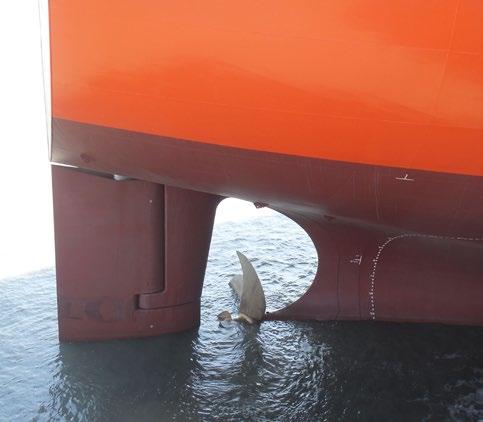
PART 1: CONCEPTS AND DEFINITIONS Page 9
All the technical systems in Table 3 that are categorized as complex have the possibility to exhibit strong emergent properties, but those properties can only be uncovered through extensive simulation or testing with varying conditions, or when specific conditions are met during actual operation. In conclusion, complex systems exhibit dynamic complexity regardless of the extent of structural complexity, and dynamic complexity results in weak and/or strong emergence.
DYNAMIC POSITIONING SYSTEM — AN EXAMPLE OF EXISTING COMPLEX MARITIME SYSTEMS

Dynamic positioning (DP) systems were introduced as early as the 1960s as a method to maintain a vessel’s position and heading. This can be achieved using a computer-based control system to automatically adjust the vessel’s propellors and thrusters to counteract changes in the vessel’s heading and position.
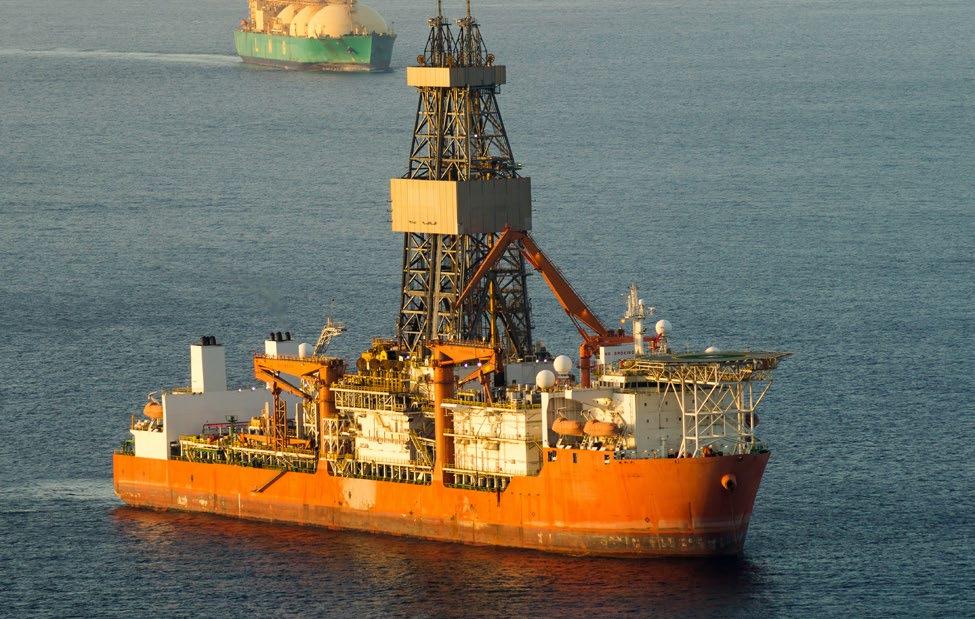
Figure 6 showed two type of vessel that utilizes DP systems for stationkeeping where the use of typical mooring systems is not practical.
OF STEERING AND PROPULSION SYSTEMS
As shown in Figure 7, a DP system typically consists of the power subsystem that supplies power to the entire DP system, the thruster subsystem that provides the variable directional forces and the DP control subsystem that takes in the inputs from the sensors and position reference systems (PRS) shown in Figure 8 to coordinate with other subsystems to maintain vessel position.
Figure 6: Types of vessels installed with DP System
Figure
7:
Dynamic Positioning Subsystems
COMPARISON
Drillship with DP System
OSV with DP System
SuppliesPower SuppliesPower Control Command Feedback Power System Thruster System DP Control System INSIGHTS INTO MARITIME COMPLEX SYSTEMS Page 10
Figure 8: Typical Sensors and Position Reference System (PRS) for DP Systems

For a DP system to maintain the vessel in its desired position, it needs both a PRS and a set of environmental and motion sensors. A PRS can either give an absolute geographical position or a relative position to a reference target. Examples of systems that provides relative positions are taut wire, radar-based system and laser-based system. For obtaining an absolute geographical position, DP systems usually use satellite-based system, e.g., Global Navigation Satellite System (GNSS) or an underwater acoustics-based system as shown in figure 8.

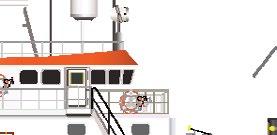

Based on the sensors’ input and the PRS available, the DP system will determine the required directional forces to maintain the position of the vessel and the required moment to keep the heading in a specified direction. Depending on the external current and wind conditions, the system will counteract the effects to maintain position and heading. This behavior exhibits short-term dynamic complexity and is a form of weak emergence as summarized in Table 3. As mentioned in previous section, for a computer-based system exhibiting dynamic complexity, a DP system is categorized as a complex system.
As explained under strong emergence of a complex system, there is a possibility of the system to exhibit strong emergent behaviors which cannot be determined unless through extensive simulation or operational use cases. In the case of a DP system, its extensive operational use cases since the 1960s have provided adequate conditions for strong emergent behaviors to be identified and mitigated. Despite its complexity, it can be well managed with processes, rules and requirements refined over the years. ABS has developed a guide for dynamic positioning system that covers the requirements for the design and testing of DP systems considering current industry practice and advancement of DP technologies.
For future complex systems using novel technologies to reach the same maturity as the DP system, they will need to go through continuous and extensive operational use cases to learn any undesirable strong emergent behaviors and to be sufficiently managed through processes and refined requirements. Alternatively, extensive simulation testing can be used as an accelerated means to uncover strong emergent behaviors. The next section will introduce one such example of future complex maritime system, the MASS.
MASS — AN EXAMPLE OF FUTURE COMPLEX MARITIME SYSTEMS
As the maritime industry transforms under Shipping 4.0, there is rapid progress and adoption of autonomous technologies with numerous ongoing projects and collaborations within the industry. MASS is a good example of increasing complexity within the shipping industry, and this paper will use the autonomous navigation system of a MASS to illustrate the increase in complexity from a conventional shipping vessel to a future MASS.

PART 1: CONCEPTS AND DEFINITIONS Page 11
Internal Awareness
Figure 9 lists potential sensors that can be used for autonomous navigation. Since the autonomous navigation system has the potential to perform the role of the human master in navigating the waters, the system will need to be able to perceive the surroundings similar to how the human navigates the waters, primarily through the sense of sight. The advantage of visual perception through machines is that the sight is not limited to the visible wavelength with the use sensors such as radar, forward-looking infrared (FLIR) camera and light detection and ranging (LiDAR) sensor. The use of these sensors greatly enhances the range and resolution of the information from the surrounding, but it lacks the human cognitive ability which is compensated by software algorithms and artificial intelligence (AI) to the extent desired to replicate that cognitive capability, either fully or partially. These software algorithm and AI features will increase the dynamic complexity of the system as mentioned previously.
Sensors including the global positioning system (GPS), fluxgate compass (heading sensor) and gyroscope sensor are required to provide the basic status of the vessel such as its heading, course, latitude, longitude, speed over ground, roll, pitch and yaw. Such data is critical to navigation as the vessel needs to know where it is in the global coordinate, which direction it is facing and the speed it is moving, to decide the next course of action to take to reach its desired destination. Errors or loss of data will result in a vessel not achieving its intended goal and can lead to a possible collision course with surrounding obstacles. This increases the structural complexity since there will be more interconnectedness between subsystems that previously would not need to be connected.
For situational awareness, a combination of sensors including radar, cameras (infrared and visible light) and sonar (for underwater scanning) can be used to detect and track obstacles. The inputs from the camera system may be used for computer vision algorithms to identify and categorize obstacles for better situational awareness and more effective collision avoidance. AI can also be utilized to improve the image processing over time when more data becomes available. This can increase the dynamic complexity of the system.
Figure 9: List
of perception sensors
External Awareness
Wind SensorRadar
Audio Sensor
Lidar
Ultrasonic Sensor
Water Speed Sensor
Inertial Measurement Sensor
Gyroscope Sensor
Camera
Heading Sensor
Sonar
GPS
AIS
INSIGHTS INTO MARITIME COMPLEX SYSTEMS Page 12
VesselStatusesObstacleInformation
Figure 10: System diagram of a typical autonomous navigation system
Figure 10 shows a simplified setup for a typical vessel with an autonomous navigation system. The existing autopilot is augmented by autonomous capability through connection to a computer-based autonomous navigation and collision detection and collision avoidance system. With collision avoidance capability, a strong emergent property can emerge in the form of system safety. Simulations and testing need to be carried out to reveal possible unknown behaviors that can emerge under varying conditions.
For conventional shipping vessels to be retrofitted with autonomous navigation functionality, the complexity of the system on board would increase significantly, with need of additional simulation and testing to ensure that any unknown and unsafe emergent behaviors can be captured and mitigated.
Figure 11: Autonomous and remote control CONOPS
Changing the system context to a MASS ecosystem as the system of interest, Figure 11 shows the Concept of Operations (CONOPS) of a MASS traversing the waterway. The introduction of MASS will eventually change the marine and offshore operations landscape. Remote operation stations may become prevalent for every MASS operation. Not only has the system complexity onboard the vessel increased, but the overall complexity of the MASS ecosystem also increased with more interconnected interfaces between the vessel and the remote operation stations. Moreover, the need for cybersecurity features adds to the complexity of the system. At the same time, more unknown behaviors are introduced in both normal and abnormal operational situations, such as during the transfer of control or during the loss of a communications link respectively.
Remote controlled from onshore control center Port communicates to autonomous vessel via satellite Controlled from another vessel Satellite
AUTONOMOUS VESSEL
Sensor beams
Situational
awareness and
collision avoidance
Remote controlled from manned vessel
Autonomous Navigation + CDCA System
Onboard Control System (e.g., Autopilot)
Steering and Propulsion System
Perception System (Sensors)
Course and Speed Command Course and Speed Statuses
Steering and Throttle Command
Steering and Throttle Status
PART 1: CONCEPTS AND DEFINITIONS Page 13
With the trend of technological advancement and the rate of adoption of novel technologies in the maritime industry, it is undeniable that the rate of increase in complexity of maritime systems will not slow down, even with the economic disruption from the pandemic, the progress of digital transformation in the maritime industry accelerated. It is important to differentiate complex systems from complicated systems so that sufficient attention is given to manage the system complexity. Part 2 of this paper will cover topics on managing complexity.
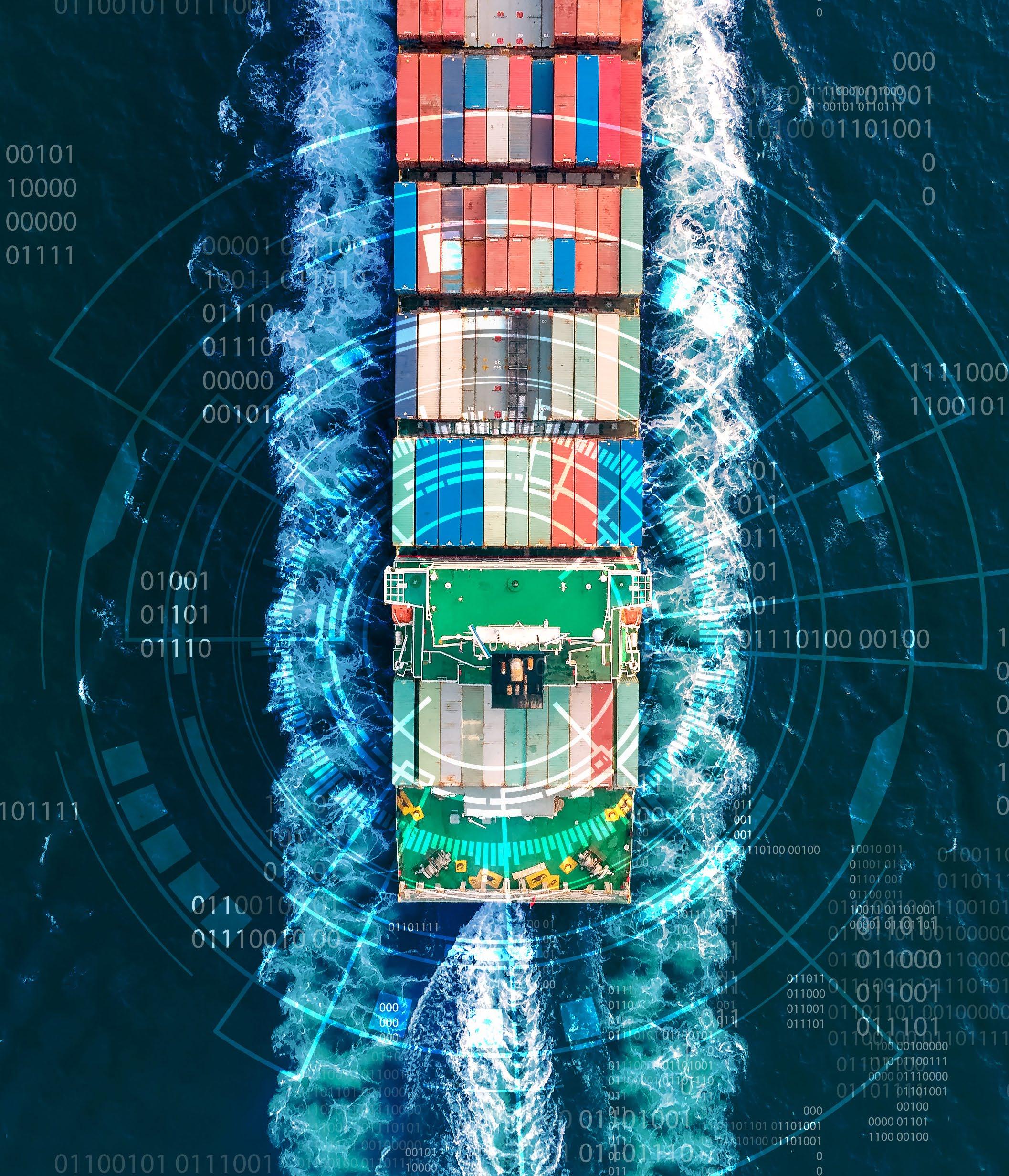
CONCLUSION
INSIGHTS INTO MARITIME COMPLEX SYSTEMS Page 14
LIST OF ACRONYMS AND ABBREVIATIONS
AI Artificial intelligence
AIS Automatic Identification System
AM Additive Manufacturing
AR Augmented Reality
CDCA Collision Detection and Collision Avoidance
CONOPS Concept of Operations
CSS Complex Systems Society
DGNSS Differential Global Navigation Satellite System
DP Dynamic positioning
EMS Energy management system
FLIR Forward-looking Infrared
FPSO Floating production storage and offloading
GNSS Global Navigation Satellite System
GPS Global Positioning System
GHG Greenhouse gas
IEC International Electrotechnical Commission
IEEE Institute of Electrical and Electronics Engineers
IMO International Maritime Organization
ISO International Organization for Standardization
IR Industrial Revolution
IoT Internet of Things
LIDAR Light Detection and Ranging
MASS Maritime Autonomous Surface Ships
ML Machine learning
PRS Position reference system
SEBoK System Engineering Body of Knowledge
SoS System of systems
PART 1: CONCEPTS AND DEFINITIONS Page 15
REFERENCES
McKinsey & Company, “How COVID-19 has pushed companies over the technology tipping point - and transformed business forever,” [Online]. Available: https://www.mckinsey.com/business-functions/strategy-and-corporate-finance/ our-insights/how-covid-19-has-pushed-companies-over-the-technology-tipping-point-and-transformed-businessforever. [Accessed April 8, 2022].
G. Nic, K. Matthew and Nick Chubb, “A changed world: the state of digital transformation in a post COVID-19 maritime industry,” Thetius, 2021.
American Bureau of Shipping, Autonomous Vessels, 2022.
International Maritime Organization, ADOPTION OF THE INITIAL IMO STRATEGY ON REDUCTION OF GHG EMISSIONS FROM SHIPS AND EXISTING IMO ACTIVITY RELATED TO REDUCING GHG EMISSIONS IN THE SHIPPING SECTOR, 2018.
K. Demir and H. Cicibaş, “The Next Industrial Revolution: Industry 5.0 and Discussions on Industry 4.0,” in 4th International Management Information Systems Conference, Istanbul, Turkey, 2017.
Boston Consulting Group, “Industry 4.0,” [Online]. Available: https://www.bcg.com/capabilities/manufacturing/ industry-4.0. [Accessed April 13, 2022].
G. Aiello, A. Giallanza and G. Mascarella, “Towards Shipping 4.0. A preliminary gap analysis,” Procedia Manufacturing, vol. 42, pp. 24-29, 2020.
R. James and K. Martin, “A sustainable ocean economy in 2030: Opportunities and challenges,” The Economist Group, 2020.
ISO/IEC/IEEE 24765:2017, Systems and software engineering – Vocabulary.
A. Rick, W. Brian, J. Scott, S. Janet and H. Duane, “Introduction to System Fundamentals,” The Guide to the Systems Engineering Body of Knowledge (SEBoK) version 2.5, 2021.
A. Rick, S. Hillary and S. Sarah, “Complexity,” The Guide to the Systems Engineering Body of Knowledge (SEBoK) version 2.5, 2021.
S. Sheard and A. Mostashari, “Complexity Types: From Science to Systems Engineering,” INCOSE International Symposium, vol. 21, pp. 673-682, 2011.
INSIGHTS INTO MARITIME COMPLEX SYSTEMS Page 16
American Bureau of Shipping, Guide for Hybrid Electric Power Systems for Marine and Offshore Aapplications, February 2022
Complex Systems Society, “What are Complex Systems?,” [Online]. Available: https://cssociety.org/about-us/what-are-cs. [Accessed April 10, 2022].
C. Peter, Systems Thinking, Systems Practice: Includes a 30-Year Retrospective, Wiley, 1999.
A. Rick, J. Scott, F. Dick, S. Janet and H. Duane, “Emergence,” The Guide to the Systems Engineering Body of Knowledge (SEBoK) version 2.5, 2021.
B. Jan, Wartsila Encyclopedia of Ship Technology, Wartsila Corporation, 2015.
United States Coast Guard, Introduction to Dynamic Positioning (DP) Systems, 2019.
American Bureau of Shipping, Guide for Dynamic Positioning Systems, 2021
B. Jennifer and K. Philip, “System Safety as an Emergent Property in Composite Systems,” 2009 IEEE/IFIP International Conference on Dependable Systems & Networks, pp. 369-378, 2009.
PART 1: CONCEPTS AND DEFINITIONS Page 17
CONTACT
GLOBAL SUSTAINABILITY CENTER
1701 City Plaza Dr. Spring, Texas 77389, USA
Tel: +1-281-877-6000
Email: Sustainability@eagle.org
NORTH AMERICA REGION
1701 City Plaza Dr. Spring, Texas 77389, USA
Tel: +1-281-877-6000
Email: ABS-Amer@eagle.org
SOUTH AMERICA REGION
Rua Acre, nº 15 - 11º floor, Centro Rio de Janeiro 20081-000, Brazil
Tel: +55 21 2276-3535
Email: ABSR io@eagle.org
EUROPE REGION
111 Old Broad Street London EC2N 1AP, UK
Tel: +44-20-7247-3255
Email: ABS-Eur@eagle.org
AFRICA AND MIDDLE EAST REGION
Al Joud Center, 1st floor, Suite # 111 Sheikh Zayed Road
P.O. Box 24860, Dubai, UAE
Tel: +971 4 330 6000
Email: ABSDubai@eagle.org
GREATER CHINA REGION
World Trade Tower, 29F, Room 2906 500 Guangdong Road, Huangpu District, Shanghai, China 200000
Tel: +86 21 23270888
Email: ABSGreaterChina@eagle.org
NORTH PACIFIC REGION
11th Floor, Kyobo Life Insurance Bldg. 7, Chungjang-daero, Jung-Gu Busan 48939, Republic of Korea
Tel: +82 51 460 4197
Email: ABSNorthPacific@eagle.org
SOUTH PACIFIC REGION
438 Alexandra Road #08-00 Alexandra Point, Singapore 119958
Tel: +65 6276 8700
Email: ABS-Pac@eagle.org
© 2022 American Bureau of Shipping. All rights reserved.
INFORMATION














